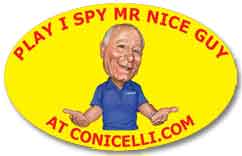So far Hyundai has linked their brand to the show with exceptional product placement, sweepstakes, commercials and even a zombie themed app. All of this is helping Hyundai convey a cool, youthful brand image to the 17.3 million viewers that tuned in to watch the show's fifth season premiere October 12. They even won the Word of Mouth Marketing Association's Driving Engagement Award earlier this year.
You may be wondering why the Hyundai/Walking Dead pairing works so well. Luckily, we have answers. The marketing tactics working in their partnership are the same things that can make your dealership's marketing successful.
Customization Is King
 |
| Image source: Elhart Automotive Campus |
Customization helps shoppers make a more personal connection with a product or business. For instance, creating a custom phone greeting is one way your dealership can forge a deeper connection. Unique welcome messages provide additional information about ongoing deals and allow conversations to start out on the right foot. This provides your employees with an immediate advantage when they pick up the phone.
Rules Are Essential
It isn't an accident that the green Hyundai Tucson used by the survivors on The Walking Dead always seems to be pristine. The agreement Hyundai has with the show specifies that the car can't mow down zombies or otherwise act like a tank. As a result, the survivor's Hyundai has been given a hero role: It's the trusted, clean and dependable vehicle someone uses to make a quick escape.
Much like Hyundai, your dealership needs to make rules that work in your favor. Compliance with the Do Not Call (DNC) list is extremely important; you don't want to contact people who would rather not talk to you, and fines for violations can become expensive. Make sure you use a DNC compliance tool while making calls to potential customers. It will help keep you compliant with the registry so you aren't slapped with any big fines.
 Relationships Matter
Relationships Matter
Hyundai has been accepted into the fold because it seeks to communicate with viewers in the right way; their messages are spirited, fun and, above all, not overbearing. As a sign of the fans' love for Hyundai and the green Tucson featured on the show, a parody twitter account for the car has even been created.
When building a relationship with customers, your dealership should focus on developing great communication skills as well. One way to make sure employees are treating customers right is through the use of a call recording system. Being able to record and review calls allows you to catch and correct any mistakes quickly so they won't plague the dealership.
For more information on building a strong bond with potential customers like Hyundai has, make sure to take a look at these five tips.





